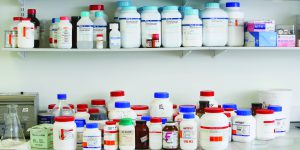The Importance of Brand Awareness in the Pharmaceutical Industry
Posted by |

Today’s reality for pharmaceutical companies is anything but care free. Competition from the generics market continues to rise, the FDA’s approvals of new drugs has declined, and resolution of the debate surrounding the Affordable Care Act is uncertain. Additionally, the new administration has called for pricing restraints. This is certainly enough to cause angst among the most experienced pharmaceutical executives.
To address these and other risk factors, pharmaceutical companies are investing in their brands. Enhancing brand awareness is, after all, a strategy to strengthen a company’s competitiveness. Yet, direct-to-consumer (DTC) pharmaceutical marketing is more challenging than ever, given the pressure of reduced budgets, competing marketing channels, and regulatory restrictions from the FDA’s Office of Prescription Drug Promotion (OPDP) on what and how a message can be communicated.
Despite these constraints, the pharmaceutical industry continues to funnel billions into new television and print campaigns. Advertising spend in this industry soared more than 60 percent in the last four years, hitting $5.2 billion last year.
In current DTC marketing efforts, pharmaceutical companies are abandoning the old reliable product-based campaigns and are focusing on the value of the drug for the patient. Additionally, disease awareness campaigns have been adopted by drug manufacturers because they can build brand recognition without having to promote a specific drug. Despite the complex and often confusing FDA regulations surrounding social media marketing, some pharmaceutical companies are also building brand equity through platforms like Twitter and Facebook.
Medical congresses are another platform to enrich a brand and have benefited from a huge investment from the pharmaceutical industry.
These conferences are usually focused on key disease areas, attracting thousands of physicians, nurses, specialists, researchers, and other health care professionals. There’s no better environment for a pharmaceutical company to build brand awareness with key stakeholders.
One major player, Sunovion, has significantly increased its investment in promotional spending, including expanding its congress presence. Sunovion, a Massachusetts-based pharmaceutical company with strengths in respiratory and central nervous system disorders, is following a multichannel marketing strategy focused on patients, caregivers, and Healthcare Practitioners, one that includes digital initiatives to communicate disease information as well as its brands. To attest to its increased emphasis on brand awareness, Sunovion’s new website was a finalist for ‘Best Branded Website for Healthcare Professionals’ at the Medical Marketing & Media (MM&M) awards in 2016. Its marketing team for the epilepsy drug APTIOM, along with its advertising agency partners, won the PM360 Marketing Team of 2016 Award. At AES and AAN, two prominent, well-attended, neurology-focused annual conferences, Sunovion invested in the highest level of sponsorship, putting its company and drug brand names on virtually everything: programs, booklets, exhibit ads, cell phone charging stations, transportation services, even water fountains.
It appears to have worked, these initiatives resulted in an increased product uptake. APTIOM’s North American net sales FY2015 vs. FY2016 grew 70.4 percent; sales of BROVANA, a drug for chronic obstructive pulmonary disease, grew 28 percent, and its schizophrenia drug LATUDA saw a growth of 24.8 percent. Sunovion is a telling case study of how powerful marketing can significantly improve brand awareness, and in turn, drive product uptake.
Today’s pharmaceutical brand managers face vast challenges including regulatory constraints, lengthy product development, competitive activity from brand shops as well as from generics, and political pressures, to name a only a few.
Marketing, both to enhance the portfolio of brands held by pharmaceutical companies as well as to support sales, is a crucial driver of success.
Traditional brand strategies such as television, radio, and print advertising need to be well-justified, and if adopted, need to be instituted with a new appeal, a new direction that differentiates the company at the brand or brand portfolio level. New vehicles, such as new and evolving social media platforms, need to be embraced, but properly and with a healthy degree of caution. These applications, in particular, can be used to complement sales efforts by offering disease information; linking the company brand to objective government and not-for-profit sites, demonstrates a patient-orientation that transfers to brand equity. Patients today demand direct, value-based engagement with drug companies, and that demand includes transparency, education, and responsiveness.
The need for product managers and other executives to truly master how to enhance their brands despite new risks and challenges is imperative to survival. What story does your brand tell?
Tags: BioPharma, Competitive Insights, Competitive Strategy, Healthcare & Life Sciences, Market Analysis



















